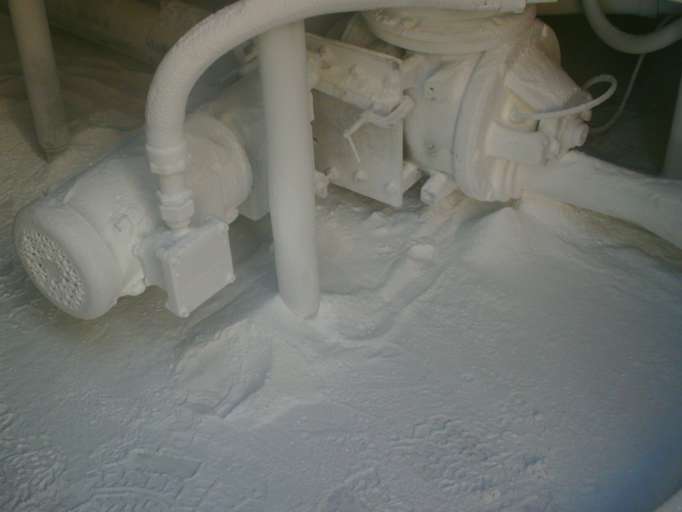Our Solutions: Consulting

A dust hazard analysis (DHA) involves systematic identification and evaluation of dust fire, flash fire, and explosion hazards and making recommendations for practical protective measures for preventing, mitigating, and managing these hazards. A DHA is needed at facilities that handle, process and store combustible bulk solids to reduce the likelihood of catastrophic incidents, injuries to personnel, damage to property, and critical supply chain interruption. Combustible dust hazards in each facility should be assessed based on its specific conditions. In the DHA, concrete safety measures (safeguards) and actions are developed to prevent and/or mitigate the effects of combustible dust explosions.
Two types of DHAs are allowed within NFPA and also described in the CCPS book, Guidelines for Combustible Dust Hazard Analysis:
Traditional (prescriptive)
Risk-Based (performance)
If you are unsure of which approach is best for you, please reach out to Sigma-HSE to discuss.
The result of a successful dust hazard analysis (DHA) is a list of recommendations for improved safeguards against combustible dust explosion and fire hazards. While a big step toward risk reduction, this list can sometimes be daunting for a facility. Sigma-HSE offers follow-on support services to help you navigate this list in the most cost-effective manner while working toward dust explosion prevention.
Test planning and data interpretation for additional testing needed to better understand and address specific combustible dust hazards
Program development of combustible dust management system elements
Customized support to develop alternative actions that achieve similar risk reduction against combustible dust explosions and flash fires
Using our decades of code interpretation experience, we can help you decipher the code requirements to help you ensure compliance
DHA training courses for all levels of employees and management
Sigma-HSE is your single solution provider for dust hazard analysis and beyond.
Whether it’s a new design or a review of existing processes involving combustible dusts, our dedicated team of specialist engineers and safety consultants are committed to helping you to reduce risk in your dust handling operations.
Sigma-HSE has the required resources, knowledge, and experience to conduct a comprehensive DHA and recommend safe, pragmatic and cost-effective solutions for dust hazard mitigation. Partnering with your team, we can do this for standard industrial equipment, specialized equipment for your process and one-of-a-kind operations.
Discover our extensive range of Combustible Dust & Powder Testing and Analysis services, and explore our process safety video tests firsthand.
NFPA 652, Standard on the Fundamentals of Combustible Dust, requires that all facilities handling or producing combustible dust complete a DHA. While NFPA standards are not themselves enforceable, the Occupational Health and Safety Administration (OSHA) relies on these standards when conducting enforcement activities under the Combustible Dust National Emphasis Program. In addition, compliance with NFPA 652 may be required under state and local fire codes, which are typically structured around NFPA 1, “Fire Code,” and/or the International Fire Code.
The focus of a DHA is to identify fire, flash fire, and explosion hazards. This is accomplished applying a high-level understanding of potential ignition sources, a basic understanding of the operations involved, and representative dust characteristics. We aim to provide a coherent focus of control and mitigation strategies for controlling combustible dust fire and explosion risk.
Conducting a DHA involves a systematic approach to identifying and mitigating combustible dust hazards. For every identified hazard, it is essential to establish safe operating ranges and outline existing hazard management measures. The primary objective of conducting a DHA is to meticulously pinpoint all potential hazards within your facility, particularly those that might have been previously unrecognized. This could be achieved by
A dust hazard analysis is a systematic review to identify potential hazards, evaluate existing safeguards, and recommend additional safeguards or process improvements to reduce combustible dust explosion or fire hazards. NFPA 652 does not specify a particular format, but common elements of the DHA include a review of combustible dust data, evaluation of operating parameters, development of hazard scenarios, evaluation of existing safeguards, and protection and mitigation recommendations. A DHA is part of an overall strategy to protect people and facilities from the dangers of a combustible dust explosion.
A DHA of process equipment is a complex task that requires a multidisciplinary approach involving individuals with expertise in various fields related to process safety management, engineering, and industrial processes.
The individual tasked with conducting the DHA not only profoundly influences its effectiveness, but also profoundly impacts the safety of employees exposed to these dangers. Ultimately, defining the qualifications of a capable individual remains one of the most perplexing and underestimated aspects of a DHA.
A DHA should be completed on all existing processes and new processes being built. It should be reviewed and updated at least every 5 years, or whenever changes are made to the process.
Our consultants undertake a Dust Hazard Analysis in a holistic way to eliminate potential fire, and explosion hazards and risks that could affect plant personnel.
By implementing best practices, our actionable insights determine what practicable control measures and recommendations should be made for your company to optimise safety and reduce the level of risk to people, business, existing facilities, workplace, and environment.
If you find yourself asking ‘Do I need a DHA?’, please get in touch and one of our DHA experts will guide you through any preliminary questions you may have.
Protect business, people, workplace and the environment from potentially unsafe equipment in hazardous zones and comply with explosive atmospheres regulations. Learn more about how we can assist you today.

Are you visiting Sigma-HSE from outside your region? Visit your regional site for more relevant process safety solutions.